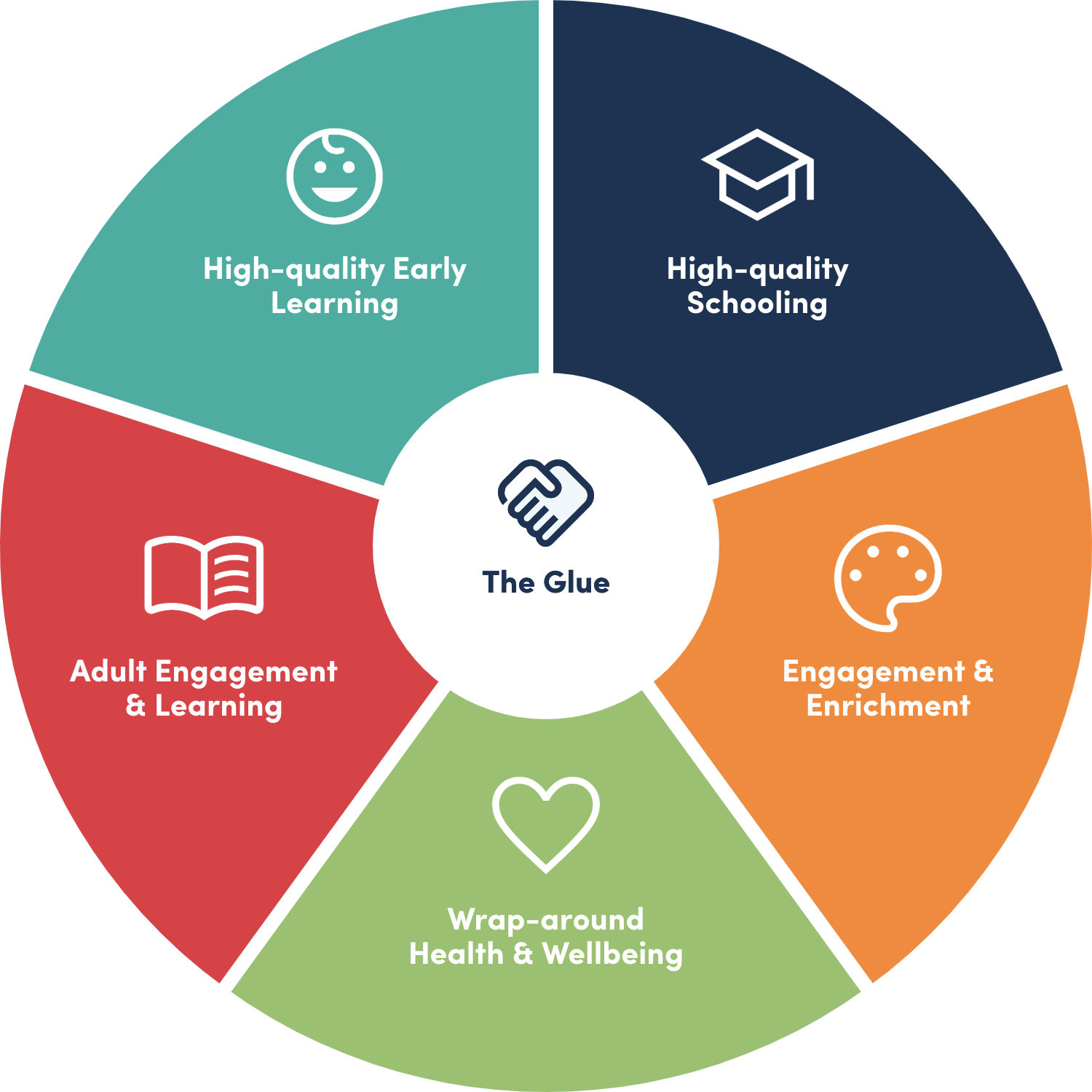Our Approach
2024 Roadmap
Looking back and
moving forward
Our Place's vision is for all children and their families to succeed in life.
The challenge
The solution
Our approach
The role of our partners
The role of Our Place
Intended outcomes
The challenge
Unfortunately, there are many communities across Australia that continue to experience long-term disadvantage, despite decades of considerable funding to provide additional programs and services. Our Place believes that, instead of funding more and more services, new ways of working are urgently required to enable families in these communities to access the same opportunities as other Australians.
The solution
Evidence shows that education is the key to overcoming disadvantage and that school-based community hubs can play a vital role in providing holistic support to children and families. Successful school-based hubs act as powerful multipliers by bringing together the existing investment in resources and services, and placing children and families at the heart of collective efforts to improve education outcomes.
Our approach
The Our Place approach enables the local school to be the place that holistically supports children and families in communities experiencing disadvantage. We are implementing the approach in nine communities across Victoria, collaborating with partners to remove barriers for families to access education, services and supports.
Effective change requires shared vision and decision making across organisations. Our Place sites are led by a Site Partnership Group, consisting of local leaders from education, government, health and the community. These groups develop shared community-led priorities, ensure high-quality services, and provide leadership for collaborative ways of working.
This supports progress at individual sites, but achieving a broader impact requires additional enablers. For Our Place, this includes system-wide authorisation through a long-term partnership with the Victorian Government.
The role of our partners
Our partners provide high-quality and accessible education, services and supports to families. The evidence behind the Our Place approach indicates there are five core Elements of providing holistic support to children and families, with each of our partners providing expertise in these key areas.
The five core Elements are:
- High-quality early learning, health and development: Support early learning from birth as well as playgroups, child health and parenting support onsite.
- High-quality schooling: Support high-quality teaching and learning environments that ensure each child receives the support they need to achieve and thrive.
- Wrap-around health and wellbeing services: Support access to effective health and wellbeing services.
- Engagement and enrichment activities: Create affordable, onsite opportunities for children to develop an interest in sports, arts and hobbies with others.
- Adult engagement, volunteering, learning and employment: Support opportunities for families to engage in volunteering, formal and inform.
The role of Our Place
Our Place advocates for families and to influence changes in practices, policies and systems that remove barriers to access. Our role, which we refer to as The Glue, requires skilled and impartial people to connect organisations and engage families. Our Place’s qualified, experienced staff are essential, as this work can’t be sufficiently resourced as an ‘add on’ to existing educator or service roles.
The four key components of Our Place’s role are:
- People: Having skilled people building relationships and connecting families to education, services and supports.
- Place: Advocating for a welcoming single-entry point and appropriate places for services at the school.
- Purpose: Bringing partners together for a shared purpose, to understand community needs and set priorities accordingly.
- Knowledge: Showing evidence and impact, providing recommendations and advocating for the approach.
Intended outcomes
Our Theory of Change outlines how the Our Place approach intends to improve educational outcomes of children by ensuring that:
- Children develop well and engage in learning and social opportunities.
- Families confidently engage in their child’s and their own learning.
- Communities with a sense of connection, pride and belonging.
- Practices, policies and systems are family-centred.

